Detailed introduction of the University of Würzburg:
Introduction
The full name of the University of Würzburg is Julius-Maximilian-Würzburg University. It is one of the four oldest universities in Germany and the first university in Bavaria, Germany. It enjoys a high reputation in the world and is a member of the German U15 University Alliance and a founding member of the Coimbra Group.
Overview
Student size: There are more than 28,000 students, including 2,300 international students from all over the world.
Faculty: There are more than 400 professors. The school and its affiliated hospitals provide a total of about 10,000 positions, of which about 3,000 are academic positions.
History and establishment time
The University of Würzburg was founded in 1402. At that time, it was established under the authorization of Pope Boniface IX. Some facilities in the city were used as teaching buildings at the beginning of the university. In 1415, due to lack of funds, the university began to decline. In 1573, Julius Eichert von Mespelbrunn was elected as the Prince Bishop of Würzburg and set about rebuilding the University of Würzburg. In 1582, the University of Würzburg was grandly reopened.
School Strength
Teaching Strength: It offers more than 250 professional courses, covering bachelor's and master's programs, including art education, biomedicine, business administration, computer science, law, medicine, philosophy and many other fields. Its medicine, dentistry, pharmacy, law and teacher training have reached the top level in national examinations.
Scientific Research Strength: The German Research Foundation DFG has funded a large number of cooperative research centers, research training groups and research units. The school's research results have an important influence internationally, especially in the fields of biology, medicine, physics and psychology, which maintain international standards. In 2006, it was selected as one of the top ten elite universities in Germany. In recent years, its Institute of Life Sciences has been selected as an elite project.
Academic Exchange: It has established partnerships with hundreds of world-leading universities such as Cambridge University, Peking University, University of Tokyo and University of Texas at Austin, and has carried out academic exchange activities such as inter-school exchanges.
Nature of the institution
Public university.
Educational philosophy
Adhering to the guiding principle of "science serves society", it is committed to gaining new insights in research fields related to the future, attaching importance to interdisciplinary research, cultivating students' innovative and practical abilities, and cultivating professionals with global vision and social responsibility for society.
Key laboratories and disciplines
Key laboratories: It has highly modern microstructure laboratories, world-leading hospitals, etc. In 2005, the hospital received 66.5 million euros in funding from the German Federal Ministry of Education and Research for the expansion of the Biomedical Research Center and the Institute of Infection Molecular Biology.
Key disciplines: Humanities, law and economics, life sciences, natural sciences and technology are its most advantageous disciplines. In the evaluation and ranking of the German Center for the Development of Higher Education, the school's psychology, biology, chemistry, physics, Germanic language and literature, and mathematics always rank first.
Department Settings
The school has 10 colleges, as follows:
Catholic Theology College
Law College
Pharmacy College
Literature College: including art, history, literature, culture and geographical research.
Faculty of Humanities
Faculty of Biology
Faculty of Chemistry and Pharmacy
Faculty of Mathematics and Computer Science
Faculty of Physics and Astronomy
Faculty of Economics and Management
Rankings
2003-2011: Ranked 101-150 for nine consecutive years in the Academic Ranking of World Universities by Soft Science, and 6-11 in Germany.
2012: 292nd in the QS World University Rankings.
2018: 84th in the Nature Index, 4th in Germany.
2021: 186th in the U.S. News World University Rankings; 140th in the THE World University Rankings.
2024: 17th in the THE German University Rankings.
Expenses
Tuition fees: German public universities usually do not charge tuition fees, but a certain registration fee of about 100-300 euros is required per semester.
Living expenses: Living in Würzburg, students' monthly living expenses are about 800-1000 euros, including accommodation, food, transportation, books, etc.
Campus
Campus environment: The campuses of the University of Würzburg are spread throughout the city, forming multiple campuses, such as the Medical Campus in Grombühl, the Department of Botany in Dallenberg, and the Hubland Campus and Hubland Nord in Hubland. Many university buildings are historical relics. Among them, part of the Würzburg Residence, which is listed as a UNESCO World Heritage Site, is still used as a teaching building. In the new Hubland campus, there are buildings such as the Art Center, Computer Technology Building, Sports Center and Biological Center full of modern structures and facilities. History and modernity coexist harmoniously.
Campus facilities: The school has complete campus facilities, including a well-equipped library, information technology center, sports and sports center, language center, etc., which provide good conditions for students' study and life.
-
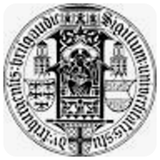
University of Freiburg
-
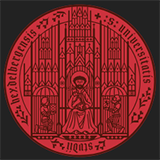
Heidelberg University
-
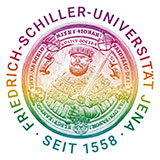
University of Jena
-
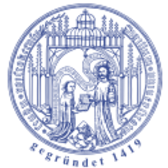
University of Rostock
-
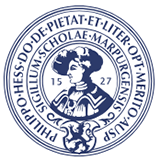
University of Marburg
-
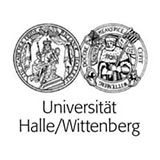
University of Halle-Wittenberg
-

University of Bayreuth
-

Leipzig University
-

University of Tübingen
-
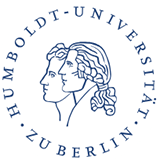
Humboldt University of Berlin
-

Mesoamerican University
-

Istmo University
-

Mariano Galvez University of Guatemala
-

Regional University of Guatemala
-

Galileo University
-

Francisco Marroquín University
-

Rafael Landívar University
-

University of the Valley of Guatemala
-

University of San Carlos of Guatemala
-

Technological Institute of Tlaxcala Plateau
-

Golfo University
-

Technological University of South Sonora
-

Technological University of Huejotzingo
-

Tizimín Institute of Technology
-

Chilpancingo Institute of Technology

